Landscaping Trends Sparked by Philadelphia Flower Show
By Jill Brooke
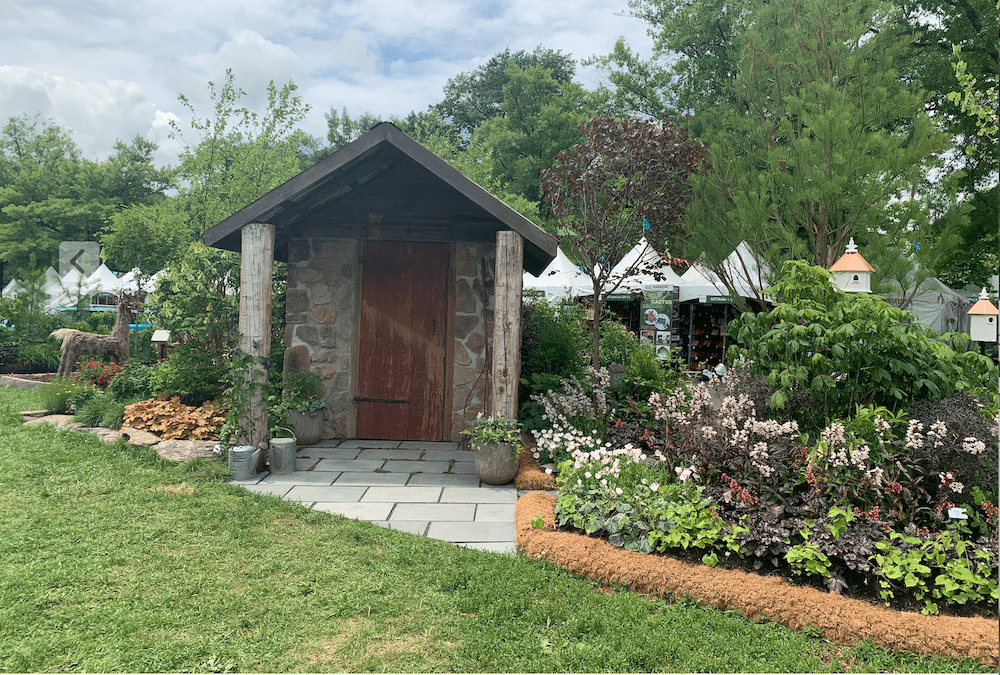
Landscape designers got to strut their stuff at the Philadelphia Flower Show like never before.
Because the historic Philadelphia Flower Show was moved from a March indoors floral extravaganza to an outside venue in June at FDR Park, this opened up an opportunity for more space and garden focus for these designers along with floral artists.
The crowd-pleasing reimagined show, which runs until June 13th, featured the most designers, gardens and floral displays in the show’s 193-year history with over 75 installations stretching 15 acres that is 45% larger than the previous space indoors at the Philadelphia Convention Center.
As a result, landscaping trends that will shape homeowners buying choices around the United States as well as abroad were introduced with great fanfare and creativity.
Here are some of the trends you are likely to hear about and see in the near future.
5 LANDSCAPING TRENDS SPARKED BY THE PHILADELPHIA FLOWER SHOW
1)Wild Plantings vs. Controlled English Garden Styles
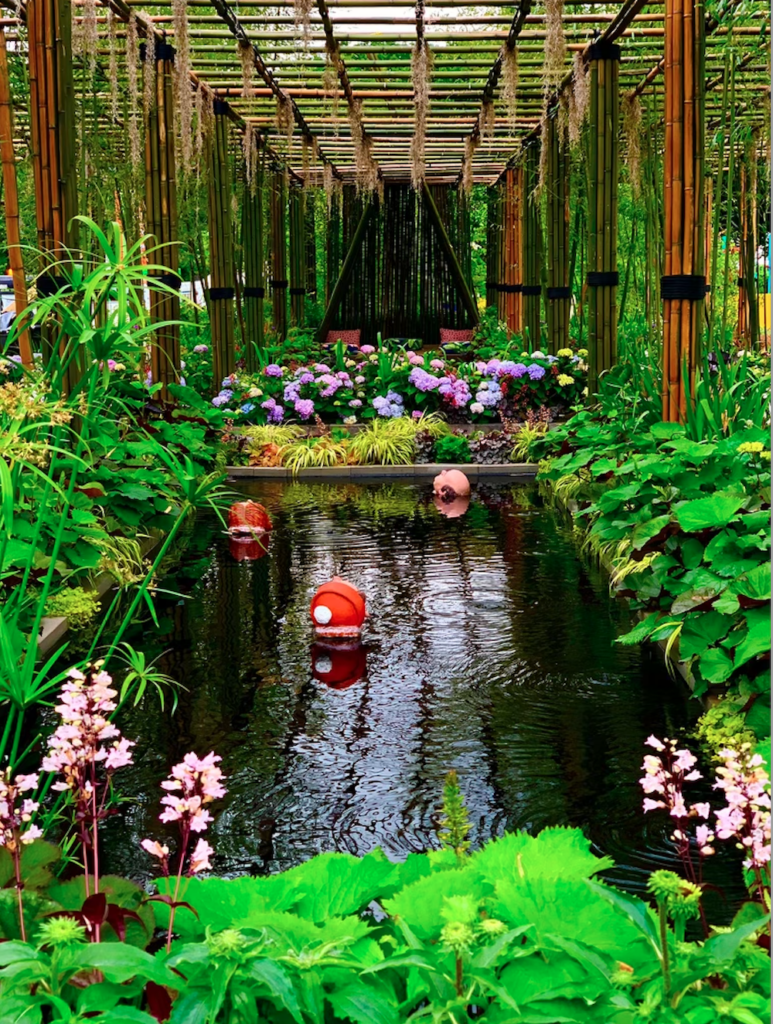
Tightly composed boxwood hedges inspired by English design are no longer as in vogue and now being replaced by a more earthy natural style.
“People are wanting a wild natural ambiance,” says medal-winner Iftikhar Ahmed, the owner and head designer of Treeline Designz which has projects in 15 different countries. Known for designing gardens that cooperate with nature and wildlife, the oh so talented Ahmed says that grasses are being revisited with peaked interest for design.
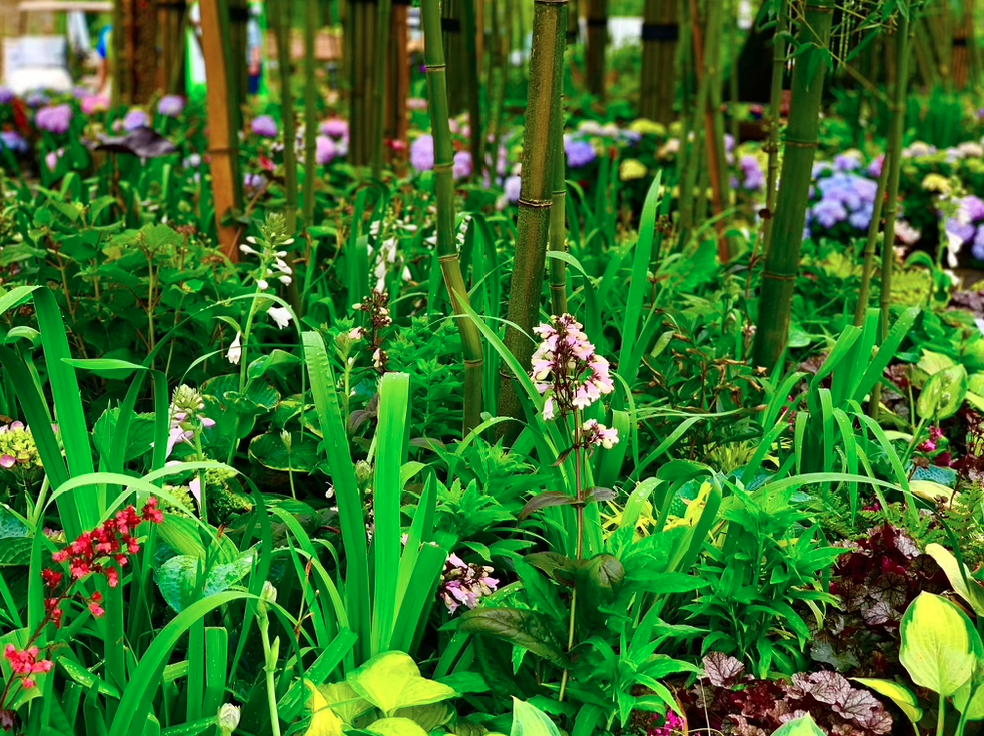
“Many plants flower and mixing materials – especially green plants – with different textures and forms of leaves create surprises.” Ahmed is a master of finding different greenery and collecting them to create compositions that literally dance along with summer breezes.
In his prize-winning garden, traditional flowers such as iris beds and hydrangeas were not the focal point but still entertained with strategic pops of color and brightness What’s a favorite new plant to incorporate into gardens that consumers should buy? “Ligularia,” he says, noting how the yellow or orange spiked colors add intrigue and delights to a shade garden. Another trend is the increasing popularity of planting native plants in home regions.
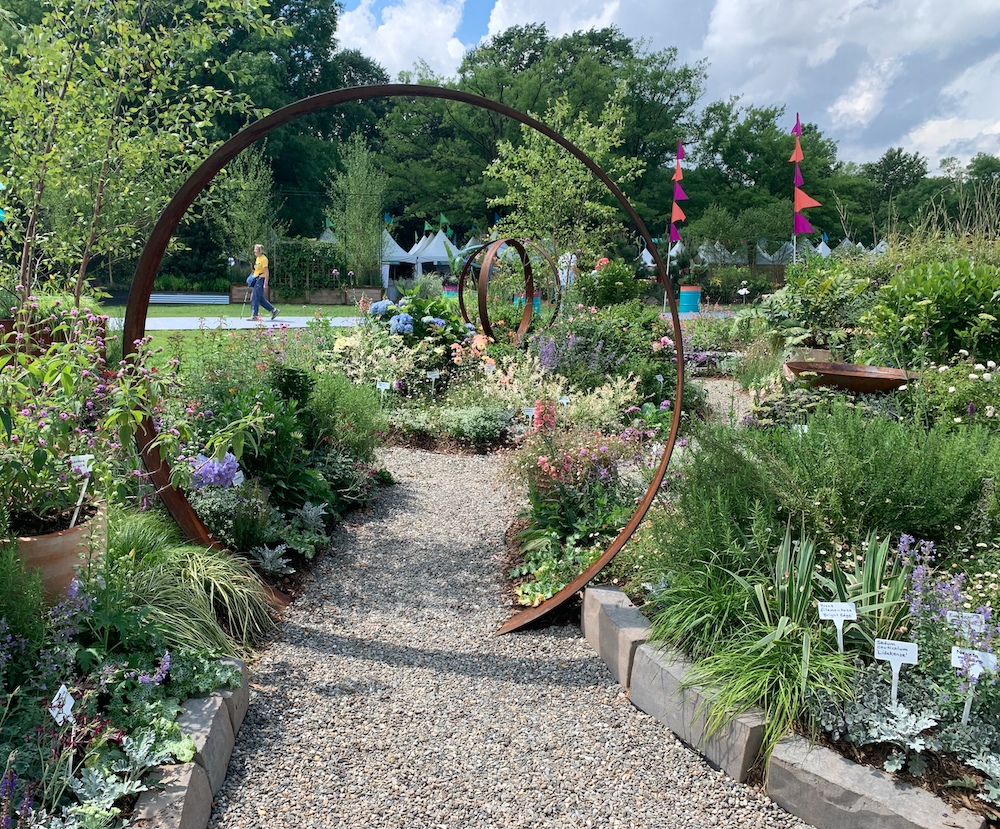
Landscape sweetheart and phenom Wambui Ippolito created an award-winning installation called Etherea which “evokes light air and peace” and was reminiscent of memories of her East African roots.
Her thin steel circular arches added merriment to the garden as well as authenticity. The pink foxgloves and verbena were so pretty as well and this was a big winner at the show as well. She also believes sedum will continue to grow in popularity with a demand for many varieties.
2) Sculptures and Art Inside the Garden

Who says that art should be inside? Several landscape artists used sculptures inside the garden to create a fashion statement. Dorothy Gillespie’s tall ribbony structures in blue and green were surrounded by purple nepeta and other simple flowers. Nepeta and salvia in different shades of purple are also finding popularity.
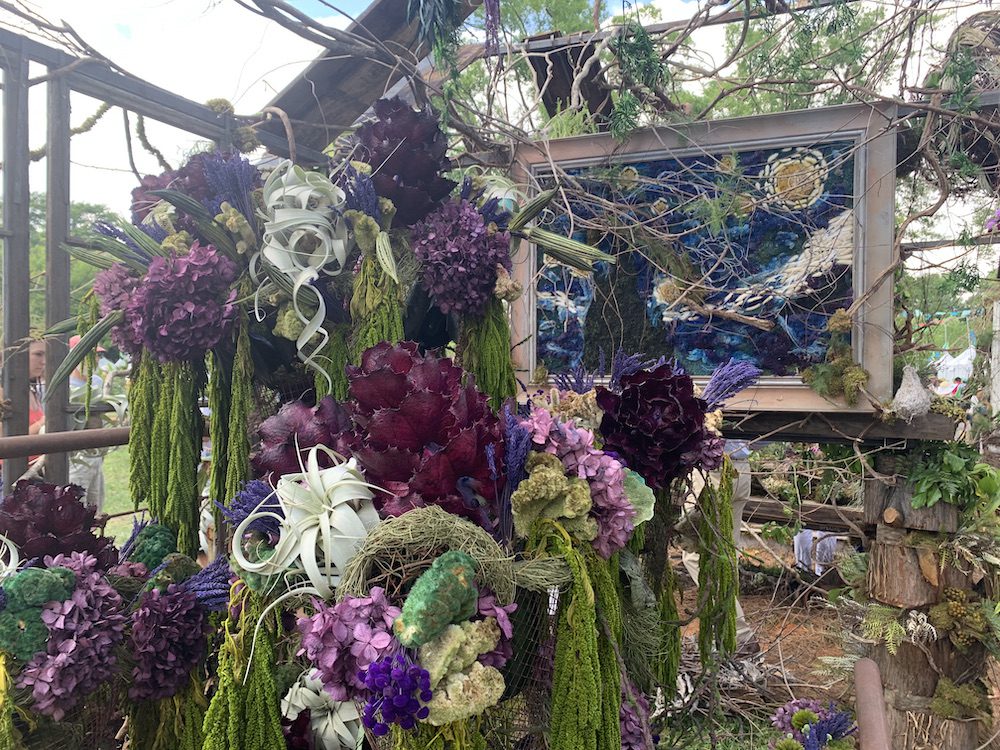 Another trend was how the American Institute of Floral Designers (AIFD) matched their inventive display with a burnished wooden frame of Van Gogh’s “Starry Night” since the colors matched the display of hydrangeas and other flowers and succulents. The painting is literally hanging from tree limbs and the flora and greenery are built around it to create depth and surprise. Theresa Colucci of Meadowscent Flowers was part of the team led by Valerie McLaughlin. “When I heard that the color scheme was going to be purple and blue, I thought of my favorite painting as the backdrop.”
Another trend was how the American Institute of Floral Designers (AIFD) matched their inventive display with a burnished wooden frame of Van Gogh’s “Starry Night” since the colors matched the display of hydrangeas and other flowers and succulents. The painting is literally hanging from tree limbs and the flora and greenery are built around it to create depth and surprise. Theresa Colucci of Meadowscent Flowers was part of the team led by Valerie McLaughlin. “When I heard that the color scheme was going to be purple and blue, I thought of my favorite painting as the backdrop.”
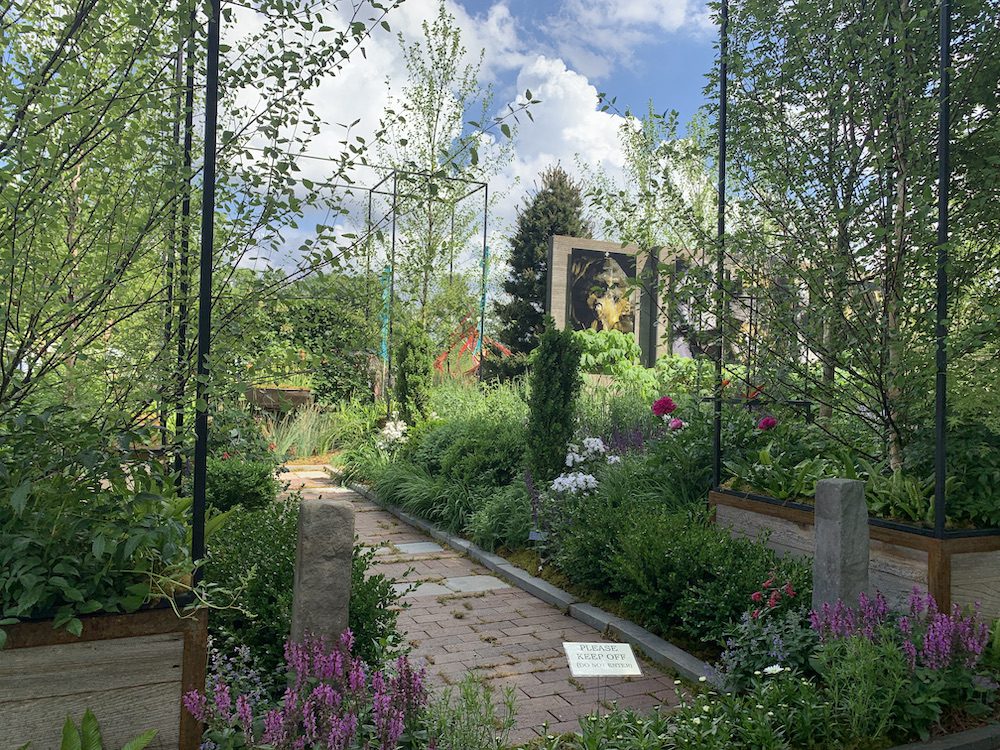
Here Mark Cook Landscape created a garden of “budding opportunity” where “pollinators can frequent the many buds and moths can nest and hide among the grasses.” However, humans enjoyed this modern painting on the wall structure that offered an interesting contrast.
Aside from sculpture, perhaps consider taking a favorite painting and transforming it onto wood for a decorative garden boost.
3) Paint is Your Friend

Two great floral artists used painted leaves and flora for spectacular results.
Bill Schaffer and his floral team at Schaffer Designs had to use “tropical” plants that would last in the outside heat such as Birds of Paradise, orchids, baby’s breath and draping amaranthus. The “challenge” he says was trying to replicate their signature use of color that stems from roses, lilies, asters, etc to an outdoor environment since they are known as master florists. Big leaves became the focus along with sculptural poles. “The painted foliage in each color group are Monstera leaves,” he said. Check out the colors he used, including bright turquoise, apple green and hot pink.

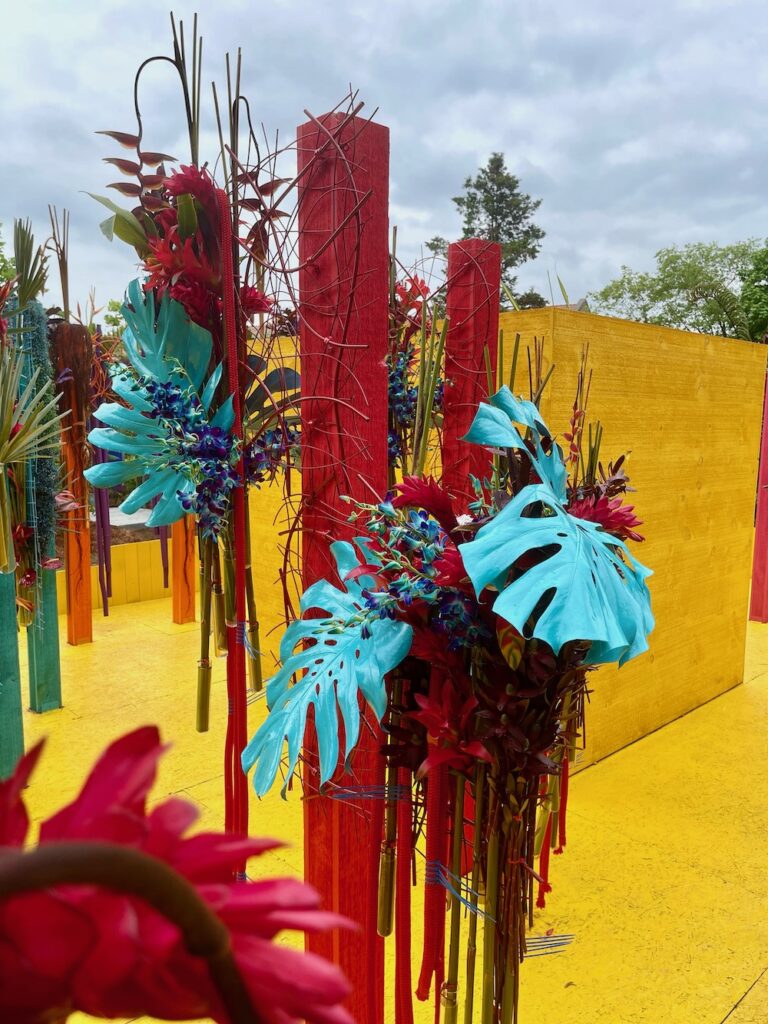
You could even use the painted Monstera leaves as placemats for outside dining as well as put them in big planters or sculptures.


Florist Jeff Leatham also used painted plumosa ferns and baby’s breath in bright pink and orange to create curved sexy tentacles from the iconic columns of the Olmsted Pavilion at the park designed by Frederic Law Olmsted. A curtain of his favorite orchids – named for his mother – also swayed in the wind inside captivating the onlookers as another focal point.
A party trick that he used was putting a stick in the ground and wrapping a magenta “Pink Floyd” rose around it in a tube of water and lined it up in front for dramatic effect. Something to think about for your next big event. “I used 1200 roses for this,” he says. Though his team has to cut the stems each day and add water to make sure they last longer than a day.
Even landscapers utilized paint in interesting ways. Here the entrance wall of Ahmed’s creation used painted tubes that match the floral inside.
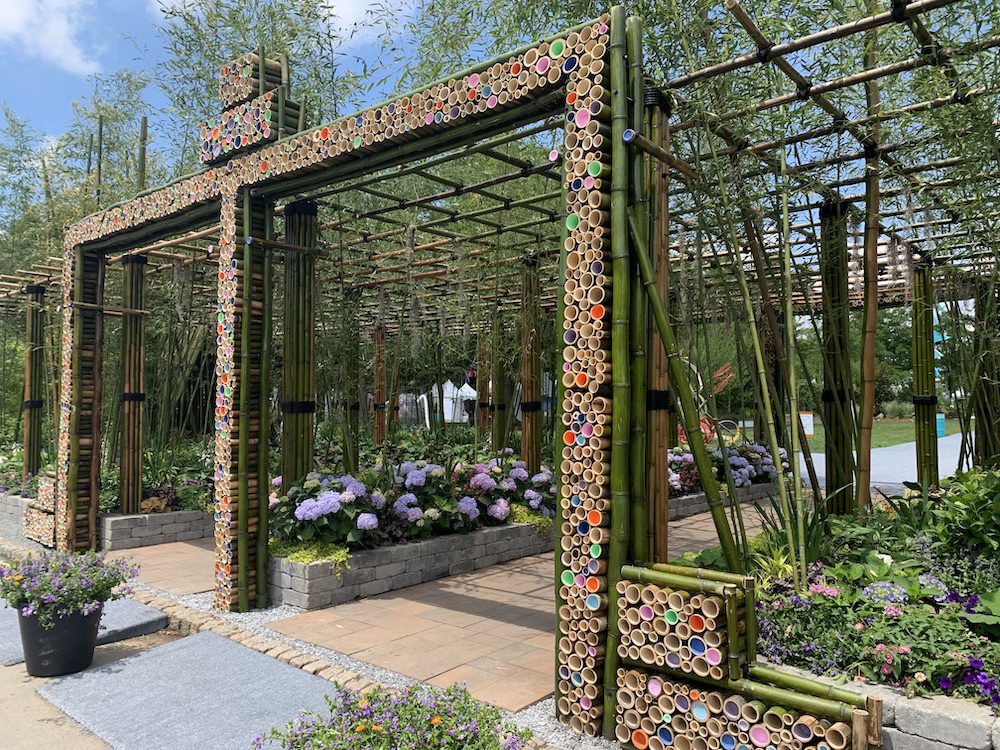
4) Dried Flowers and Materials Are Welcome

Just like faux flowers are no longer dismissed since the quality has risen to new levels, mixing dried flowers with live vibrant blooms can create appeal. Here is an example used by Jennifer Reed. Furthermore, it is more cost-effective because flowers as we know last a short period of time in the garden since perennials stagger their blooms in short bursts throughout the summer. Annuals have been used to give more color for longer periods. Now more landscape artists are adding dried flowers to the mix as another artistic option as well as painted succulents and moss.

Brooklyn’s Nomad Studio sparked gasps of delight in using an ancient Japanese technique of using moss and soil to create root balls- instead of pots – to show the relationship between soil and plants and how “their partnership with plants creates a suitable habitat for us all,” two topics definitely trending right now. Soil is the essence of all growth afterall. The crowds rooted for this installation which looked like an amphitheater of root balls that also picked up on using round topiaries which is a shape that we are seeing more and more everywhere. “
In fact, AIFD’s exhibit also used moss balls as a vase filled with succulents.
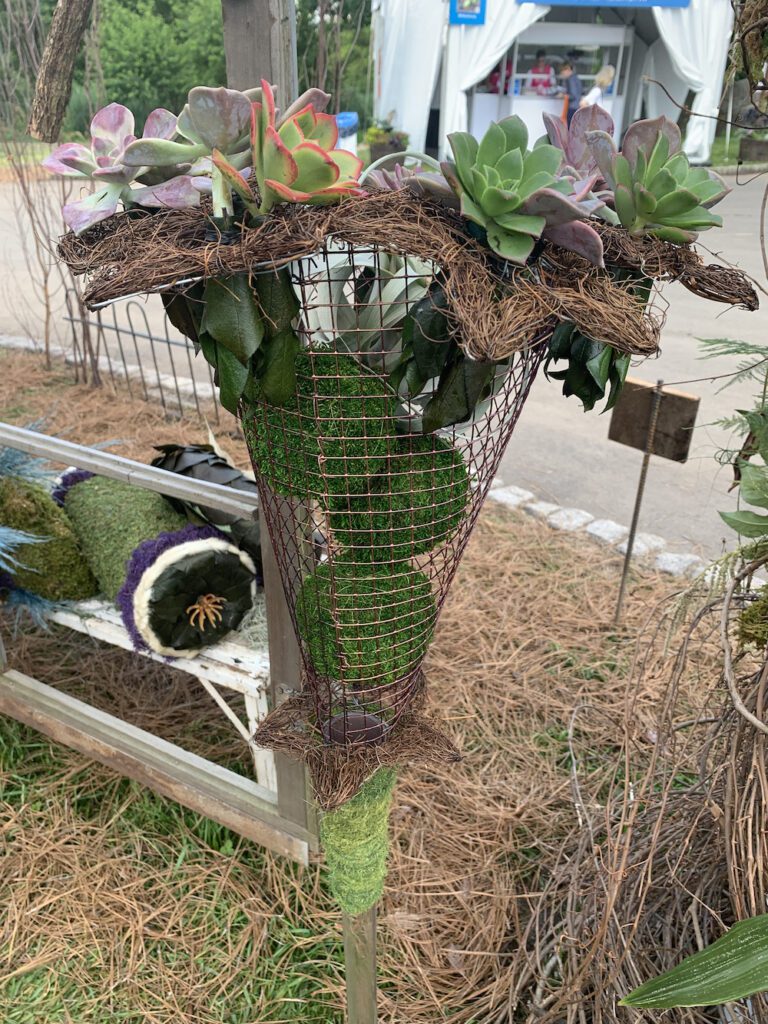
5) Make Your Mailbox a Focal Point or Even a Bathtub
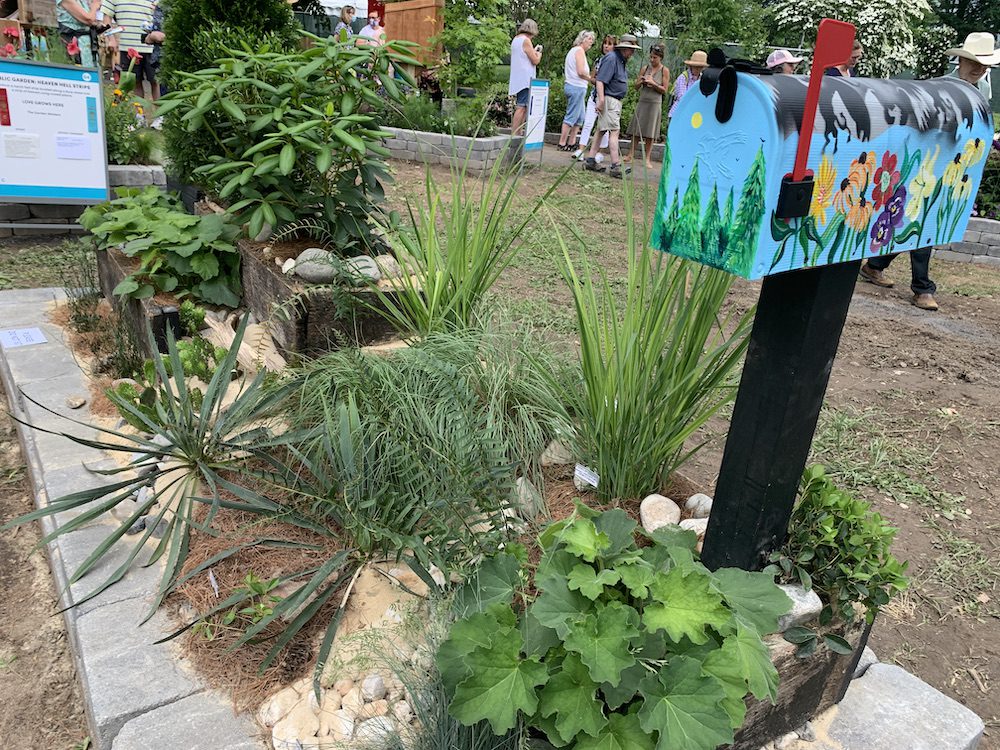

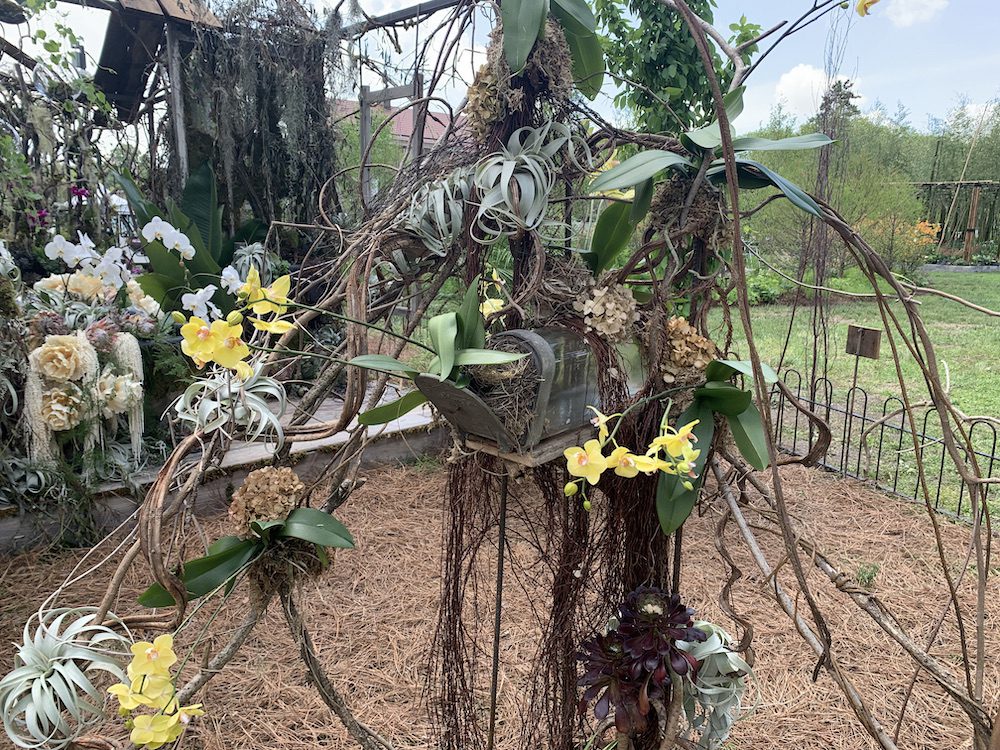
Not only painted mailboxes but perhaps a garden-like vista around it. Can be charming with a little effort. Whimsical can be fun so let your creativity roam wild and create a natural “Habitat” which was the theme of this show, and post-pandemic life.

Jill Brooke is a former CNN correspondent, Post columnist and editor-in-chief of Avenue and Travel Savvy magazine. She is an author and the editorial director of FPD and floral editor for Aspire Design and Home magazine.
Photo Credits: FPD
